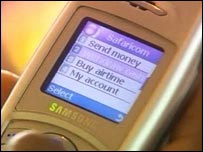Success or Failure for the Re-Launch of Mobile Banking
A series of new mobile reports from Javelin Strategy & Research has uncovers significant product marketing requirements for building banks' consumer usage of mobile services. While consumers are better primed for mobile banking now than they were in 2000, financial institutions (FIs) should not consider the mere availability of mobile banking a guarantee of success. FIs should prepare for measured, rather than widespread and immediate, adoption, even though consumers, handsets and mobile networks have made tremendous advancements.
As Javelin's research shows, mobile banking and payments will grow as banks design products based on consumers' mobile needs for simplicity and immediacy while educating end users to curtail perceived risk factors.Early adopters are projected to be current mobile Internet users (MIUs), who represent 12% of US adults who own cell phones (approximately 27.8 million people). In order to appeal to this sizeable market, FIs will need to focus on the mobile preferences of this population first. These individuals require unique product design strategies, due to a distinct preference for how and why they log on.
Institutions must evaluate the tradeoffs of multiple platforms (downloadable app, SMS, browser-based app) in order to garner adoption beyond the mobile Internet users and reach other segments, such as Gen Y, risk-averse and higher-income consumers, who each have their distinct motivations for using mobile banking. According to President and Founder of Javelin Strategy & Research, James Van Dyke, "If 'anywhere, anytime' banking is the benefit of mobile banking, then providing all platforms satisfies the most fundamental consumer preference for 'anywhere.' By taking a targeted product and audience approach, banks and payments firms can finally increase the near-term return on mobile product and marketing investments."
On the other side of this mobile banking adoption equation are the perceived security vulnerabilities. According to the study of over 2,200 online consumers, one in two people (49%) perceives mobile banking to be unsafe, yet analytical review shows that this channel offers important security advantages and minimized risks compared to online banking. Institutions must proactively address the perceived security flaws while unflinchingly touting the relative safety advantages. Resulting from these survey findings is Javelin's call to the industry for an open forum collaboration for security requirements among carriers like AT&T, Cingular, Sprint, T-Mobile, Verizon, etc.; financial institutions; as well as leading vendors like ClairMail, Firethorn, Fronde, mFoundry, MShift, and M-Com. Here’s the
Here’s the  Link:
Link: